Selecting the perfect custom lanyard is key to your budget and timeline but who really knows the difference between screen printing and dye-sublimation?
While there are tons of options to sift through, understanding the difference will allow you to choose the perfect ones. Lets break down all the options and then ask two key questions at the end.
Imprint Methods
There are three main methods for imprinting your message onto a lanyard:
- Screen print or Silkscreen (same thing)
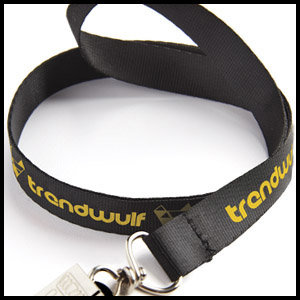
This is the most common option and will have the relatively lowest price across the board. Essentially, this is similar to the process used to put the logo on the shirt you got for running that 5k last month. Your message is ‘stamped’ on with ink that adheres to the lanyard fabric. When you glide your finger over the lanyard, you will be able to feel the imprint because it’s on top of the lanyard. Keep in mind that the screen print is one color, so if you want multiple imprint colors, this option is not for you.
- Embroidered
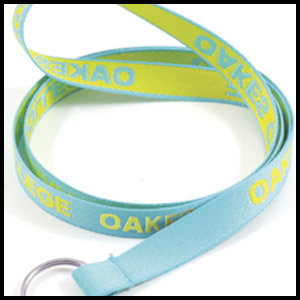
This is a classic choice. Your message is woven into the fabric. This is good if your message is just text, like “Red Hawk Pride”, a lanyard I would have loved in high school. IDville also offers an embroidered option where the lanyards can be individually personalized, so each member of your staff could have a lanyard with their name on it! Keep in mind, that the outside of the lanyard will look great but the inside may look a bit like the back-side of your grandma’s needlework, reversed and unfinished. Also, like screen print this is not a multi-color option; one color for the lanyard and one for the embroidery, that’s it.
- Dye-Sublimation
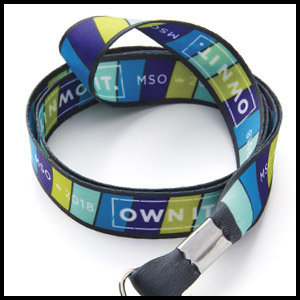
What the heck does that mean?! Basically, certain man-made materials, when heated, allow for the bonding of ink to the surface of the material. This process allows for vivid and beautiful full-color patterns, logo, and text to be embedded on the fabric. These look really cool and are great if you have a detailed logo or a full-color background design.


Fabrics
This may seem trivial but depending on your use of the lanyard there are a few things you may want to consider. You may not have a choice in fabric depending on imprint method but it’s worth knowing what you’re getting.
This is the softest option but they can get wrinkled which is a definite down-side. Cotton lanyards are only available with screen print as the method of imprinting.
These lanyards are still soft and have more of a matte finish. You’ll find this fabric used for screen print lanyards and embroidered lanyards.
I’d say this is the least soft of the options but they have a shiny finish which really helps them stand out. This is paired with the traditional screen print but also used for our personalized embroidered lanyards.
I’d say this is the least soft of the options but they have a shiny finish which really helps them stand out. This is paired with the traditional screen print but also used for our personalized embroidered lanyards.
Once you choose the imprint method and fabric (if necessary) the decisions become a bit more straight-forward.
Color
When selecting your lanyard and message colors, make sure they different enough so that your customization is easily visible. Most customers stick with black text on light colored lanyards and white text on dark colored lanyards.
Fonts
All suppliers should have a few fonts that you can choose from, just remember that you want this to be legible, so stick with a font that is clear and easy to read.
Attachments
All lanyards have an attachment at the bottom that you can connect and ID badge, name tag, keys, and a multitude of other things you deem necessary to carry around. There can be a lot of options, in terms of plastic or metal, but here is the basic breakdown of the most popular attachments.
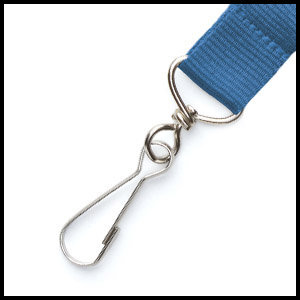
This has a strong closure, you press on one side and it opens a bit to allow the attachment of a nametag or ID badge. The J-hook is secure and won’t open on its own.
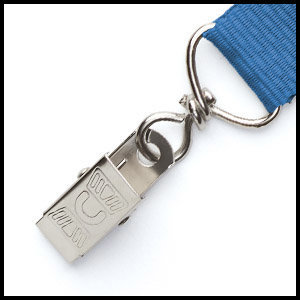
This attachment opens by squeezing the two ends together. This can easily come open of you lean on or press something against the clip. The upside is that badges lay nice and flat against your chest.
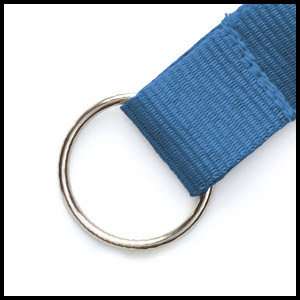
This is probably just like the keychain that your house key hangs from. It’s a circle with a split that you pry apart with your fingernail (if you have them) and wind your key or badge onto. Badges rarely lay absolutely flat when you use a split ring but if your lanyard is being used for other purposes this is a very secure attachment.
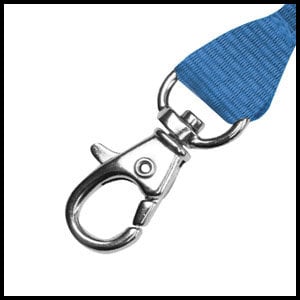
Similar to the J-hook in shape, it opens a bit more easily due to the spring-loaded mechanism used to open and close the clasp. On lanyards, the lobster claw also tends to have a bit larger mouth.
Bonus Tip: Some attachments will have a swivel so it’s easy to flip a name tag or ID badge from front to back while attached to the lanyard. I personally like the swivel as it allows for some free-flow movement of what is attached to your lanyard but if you’re adamant that one side of what is attached must be showing at all times, this may not be an option you want.
Breakaway
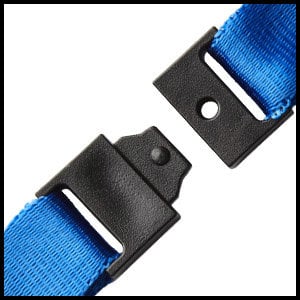
The breakaway keeps lanyards from being a choking hazard. A plastic clasp, typically with male and female parts, is placed at the back of the neck of the lanyard. When the lanyard is pulled on the plastic clasp will come apart. It doesn’t break, you can fit the parts back together, closing the clasp, and continue using the lanyard. This is great if lanyards are being given to children or used in a facility where the lanyard could get caught on something. Honestly, it’s a great safety feature and you should get it.
Hopefully by now you have a good idea of what you want your lanyard to be, but before you go and order, there are two key questions:
- How quickly do I need them?
This may limit where you can purchase lanyards or the price that you pay. You will pay a premium if you need expedited delivery or if you require a very large quantity in a short turn around. Hey, it takes time to weave that fabric together and get your message on it!
If you are ordering a very small number of lanyards, good luck. Most suppliers require a minimum of 100 pieces for an order. Fortunately, IDville has worked out deals with vendors for a minimum of 50 on all most all of our lanyard options. If you require a large number of lanyards and don’t need them for a while, you can save quite a bit of money by finding a supplier that can source them from overseas [Bulk Value].
In terms of choosing who you buy custom lanyards from, here are two pieces of advice.
- First and foremost, make sure the supplier has the options you are looking for. If you don’t see the options you want on their website, call and ask. Most vendors, including IDville, should be able to get you what you need. If they can’t or won’t, they aren’t worth dealing with.
- You are likely paying a good sum of money for the lanyards you want, so make sure you get what you want. This not only includes the actual product but the service, support, and guarantees that go along with a good business partner. IDville’s 30-day money-back guarantee is legit, let it give you peace of mind. On top of that, our customer service staff is top-notch, if you don’t believe me (because let’s face it, I’m biased) check out our customer reviews.

